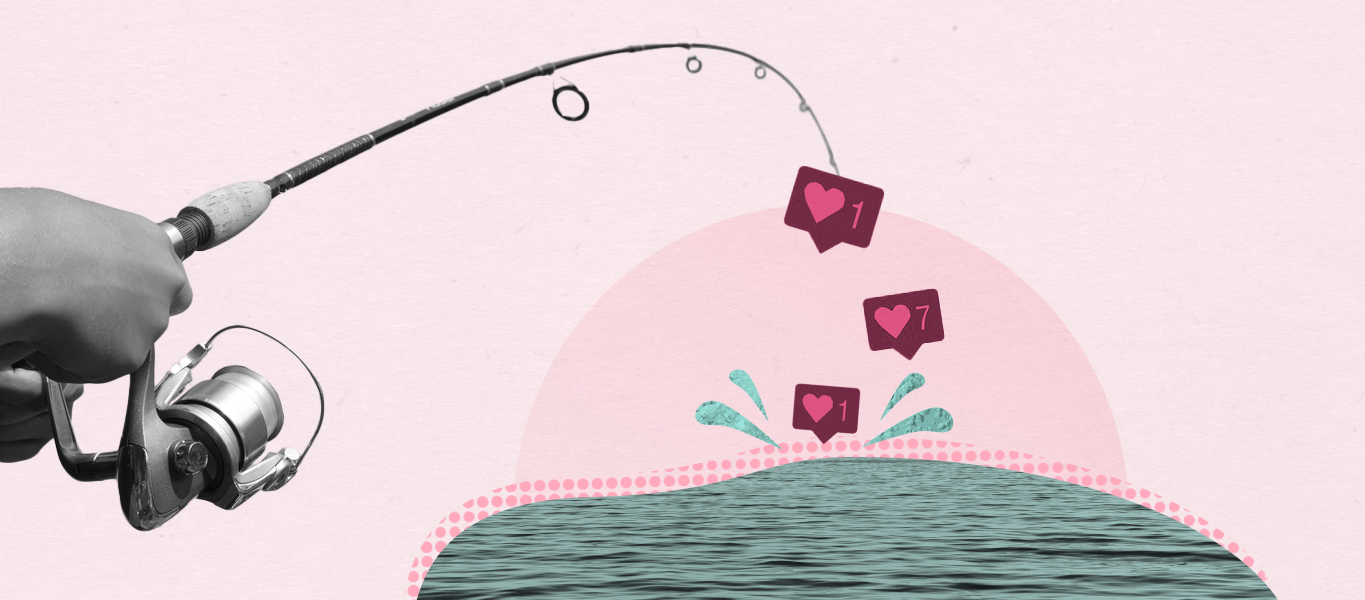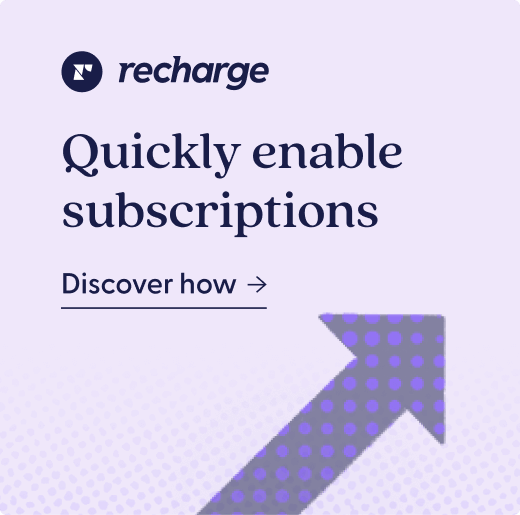Many brands see rapid growth with their subscription businesses. Some face the challenge of canceled subscriptions among their customer base and wonder what went wrong, and how they can remedy it. Determining why a customer has canceled subscriptions is the first step in the battle, but turning those into a subscription reactivation is how you win.

How to reactivate subscriptions
A proactive approach to reactivating canceled subscriptions is the first line of defense against unnecessary churn. Finding ways to engage with your customers to understand why they’re canceling is a great way to empathize with them and gain intel on how you can better improve. If done right, oftentimes that canceled subscription can turn into a reactivation. You can start with a softer approach, via email or customer portal updates. However those tactics may not get the information you or your customers need in a timely or actionable way.
In a world where text messages and digital communications take precedence over human interaction, personalized phone calls can help differentiate your business as being customer centric. However, if your volume and staffing does not allow for such call, you could always follow up with an email that reads something like this:
Dear James,
Thank you so much for your business. I was just alerted that you canceled your subscription with us due to pricing. My co-founder and I are grateful for your candid feedback. Upon consulting with one another, we have decided to offer you a 20% lifetime discount on the subscription. Would this make our plan fit better into your budget?
Cheers,
Tony Smith
Removing roadblocks for your customers to avoid canceled subscriptions
Knowing the reasons behind a customer canceling a subscription gives you the ability to overcome the customer’s concerns and objections. Moreover, it allows you to get to know your customer and how your products fit them. With this invaluable research, you are able to not only adjust your offerings to better suit your customers needs, but also understand shifts in the market.
Objection #1: “This subscription is too expensive!”
If a customer is unable to justify the cost associated with your subscription, they are highly likely to cancel. The value you bring outside of just your product may be unclear to your customers. Additionally, with a highly saturated subscription market, it is imperative that you are able to combat the all-too-familiar argument that your subscription offering is too expensive.
So how do you handle this objection that your product or subscription offering is too expensive?
You can start by offering them a discount . By doing so, you not only show that you care about their continued relationship with you, but that you are willing to modify your cost in order to win back their business. The risk here is that once that discount runs out or you adjust pricing, you may lose these customers.
Another strategy is to offer varied price points. Perhaps their needs have shifted, and they no longer require the same volume of product or service that they signed up for. By giving your subscribers additional options, you may convert back the customer to subscription. This speaks volumes to the fact that customers want to be in control of their subscriptions. Allowing them to customize their experience with you can create loyal fans.
Objection #2: “I already have more products than I need!”
When a client has leftover product from the previous cycle, their likelihood of cancelling expands exponentially. Compounded with the majority of consumers living in spaces where storage is limited, accumulating products faster than they can use them creates excess.
Creating new avenues for your customers to engage with their subscriptions.
Flexible options allow for subscribers to gain control of their product accumulation. By enabling features like the ability to skip a month or swap out products, you create a sense of customizability and control. Consumers want to feel valued and heard, and flexible options can turn a potential canceled subscription into reactivation.
You can also offer to change shipping frequency. Perhaps they’re just not using the product at the same rate as the average subscriber. By allowing them to change their frequency of delivery from let’s say once a month to every three months, you eliminate the potential for excess product accumulation.
In the event of a canceled subscription as a result of too much product, be sure to reach back out. Send your previous subscriber a two month follow up email to see if they are out of the product, and if they want to re-subscribe (option to provide lower pricing if available!)
Objection #3: “I need it sooner- it is not coming fast enough!”
The flip side of our second objection is that your consumers are running out of products too fast. This is a good problem to have with the most upside to avoid a canceled subscription.
How to give your subscribers options to keep their subscription active and in the right quantities.
The most straightforward way to combat this objection is to offer to change shipping frequency. Another nod to providing flexible options, altering the shipping frequency will alleviate a customer’s challenge of not having enough product within their needed timeframe.
You also have an opportunity here to upsell or cross-sell additional product offerings. An example might be in a beauty box. Your customer is running out of face serum too quickly. However, based on your research, you know that the amount sent is likely much more than they even need before a new shipment arrives. Perhaps they’re sharing it with a member of the household, or perhaps they’re just using too much. By giving them education on how to best apply skincare products, and offering them additional products for their regimen, you may decrease the likelihood of an unsubscribe and instead enable them for future purchases.
Objection #4: “I want a different product.”
What happens when your customer is no longer interested in the initial product they subscribed to? Well, you likely have other products within your store that may be of interest to them and they may not even know.
Leveraging your cross-sell functionality to avoid a canceled subscription.
To gain intel on why they may want a different product, you can ask open-ended questions to determine if you are able to meet their needs with a different product in your store. If you do not have the product that they are looking for, ask for more information and take notes, this could be a learning opportunity for you that eventually expands the products offered in your marketplace.
Sometimes, consumers are unaware of your full product set, especially if you update your store often and release new products regularly. By reaching out to them via email, text, or on your website, you may be able to showcase a new subscription offering they have yet to explore. Making that process seamless in their account and providing them access to explore more products can accelerate the process.
Objection #5: “I no longer use this product”
Your client has stopped using the product to which they are subscribed, which means they’re not only accumulating excess, but also paying for something they no longer find valuable. This often happens in cases where the user may “age-out” of a particular product set. For example, diaper subscriptions are only as good as long as the child is wearing diapers. Once potty-trained, the use for that type of product offering is no longer needed.

Do you cut your ties and focus on new customer acquisition?
To ensure that your customers really don’t need the products you are offering, you can ask open-ended questions. Examples might sound like, “Why have you stopped using our product?” or “What could we do differently to meet your needs?”. During that discovery you may find that they have gone to a competitor, or have an allergy to an ingredient, or have a child who has grown out of the product all together.
Depending on those discovery questions, you may find that they are ready to move on. But creating a stellar customer experience during that process and ensuring you understood their needs will potentially open them up to reactivate, or to recommend someone to a new subscription with you all together. Furthermore, this gives you the opportunity to re-evaluate the products that you offer, and to explore holes in your business model to see if new offerings make sense.
Objection #6: “This was created by accident. I don’t know why I am subscribed!”
In rare instances, someone may have stumbled into a subscription with you accidentally. In this case, it is imperative that you work with the customer to ensure you create a memorable and positive experience. It may be the most beneficial to help them cancel, or it may be an opportunity to educate them about the value of the subscription they signed up for.
How to handle this situation in an empathetic manner.
Once you have figured out how this customer accidentally signed up for a subscription, you can identify key external-facing areas to ensure that your marketing verbiage is clear. Review all marketing material and confirm that subscription details are properly outlined on both the product and checkout page. Another place to look is in the confirmation email they receive to ensure it is clear that they will be billed on a recurring basis.
We all make mistakes. Empathizing with a customer who has made an error will create a relationship even if they cancel. The great news is that word travels fast among friends and family. If you worked with them to sort out the issue promptly and with understanding, they are more likely to recommend you in the future or eventually sign on to a subscription service.
Cancellations happen, but so do subscription reactivations
Unfortunately churn by way of cancellation is a major component of the subscription business model. Use each cancellation as a lesson on ways to grow and evolve your business. You will garner invaluable information by communicating with your canceling customers, which can result in price changes, frequency changes, and product changes. Additionally, it’s important to foster regular communication between you and your current subscription consumers so you can keep a pulse on issues that may be bubbling up behind the scenes. In doing so, you may be able to head off a cancellation attempt immediately versus waiting to have to reactivate a subscription.
How Recharge helps to reactivate a subscription
Many merchants use Recharge to help control their customers’ ability to cancel. Although you can make this component automated, we recommend that you do not do so when you are first launching your business. Having personal communication with your customers during the first stages of your business will help you modify your product offerings, get important feedback, impact your business strategies, and adjust your subscription frequencies.
When your subscription business is in a more advanced state, turning on the automated feature will allow your clientele autonomy over their subscription service. Additionally, you can use features like RechargeSMS to enable subscription management and engagement more easily.
To learn more about how Recharge can help you stave off cancelations so you can focus on the reactivations, try it out for free today!



